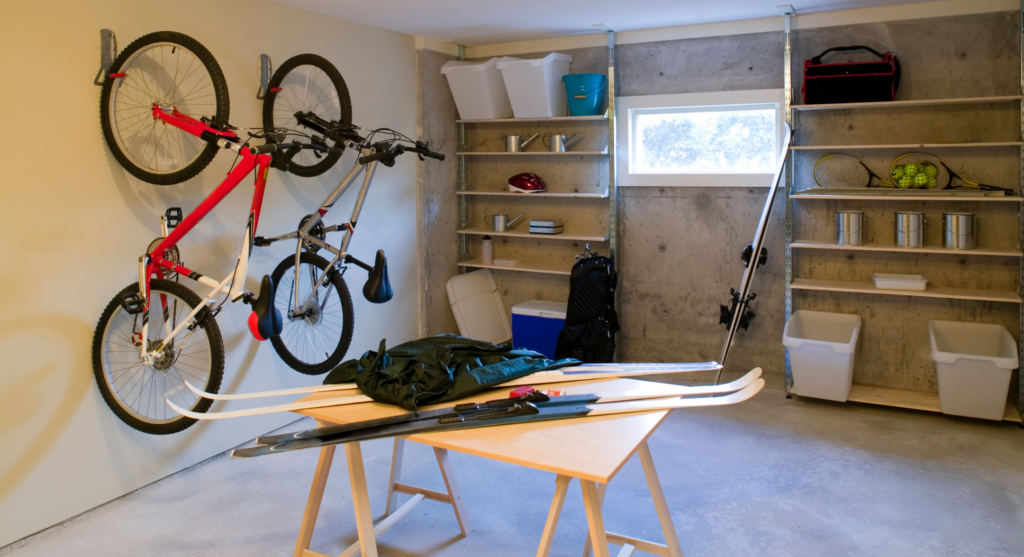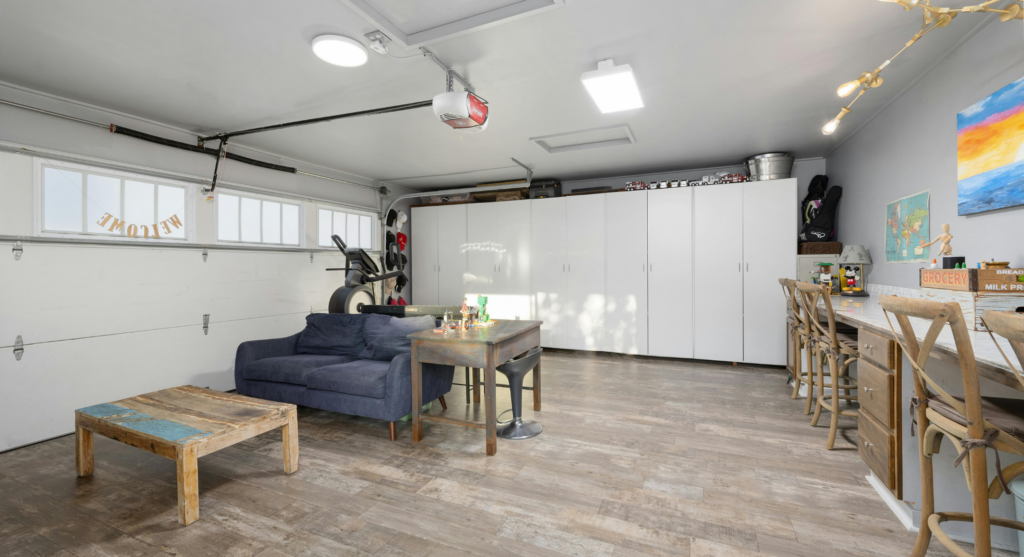When it comes to creating a more efficient and stress-free home, one of the most impactful changes you can make is to organize your space. Whether you’re dealing with a cluttered pantry or a chaotic garage, a well-organized area can transform your daily routine, save you time, and even reduce stress. In this article, we will explore practical strategies, step-by-step methods, and expert tips to help you declutter and maximize the storage in your pantry or garage. Let’s dive in and learn how to organize your space for a more streamlined life!
Many homeowners struggle with clutter, especially in areas like the pantry or garage, which are often used for storage and tend to become catch-all spaces. Over time, these spaces accumulate items that no longer serve a purpose, making it difficult to find what you need when you need it. This article will provide actionable advice and creative solutions to help you organize your space, so you can reclaim your home and enjoy a clutter-free environment.
Whether you’re looking to improve your pantry’s organization for more efficient meal planning or need to transform your garage into a multi-functional area, the tips below will help you get started. By learning how to organize your space effectively, you’ll not only enhance your living conditions but also boost your overall productivity and well-being.
Why Organize Your Pantry or Garage?
Enhance Efficiency and Save Time
A well-organized pantry means you can easily locate ingredients, reducing the time spent searching for items during busy mornings or meal preparations. Similarly, an organized garage ensures that tools, sports equipment, and other essentials are readily accessible when needed. When you organize your space, you create a system that streamlines your daily activities, ultimately saving you valuable time.
Reduce Stress and Create a Calm Environment
Clutter can be a significant source of stress and anxiety. By taking the time to organize your pantry or garage, you create a more harmonious and peaceful environment. This clarity not only improves your mental well-being but also encourages a more mindful approach to consumption and storage.
Maximize Storage Capacity
Small spaces require creative storage solutions. Whether you have a compact pantry or a small garage, proper organization allows you to maximize the available space. By using storage bins, shelves, and labeling systems, you can organize your space to make the most of every square inch.
Increase Home Value
An organized home is appealing not only to you but also to potential buyers. A neat pantry and a well-maintained garage contribute positively to the overall appearance and functionality of your home, potentially increasing its market value.
Getting Started: Assess and Plan

Before you jump into the process of decluttering, it’s crucial to assess your current situation and develop a plan.
Evaluate Your Space
Start by taking a good look at your pantry or garage. Identify which items are essential and which can be discarded, donated, or stored elsewhere. Consider the following questions:
- What items do you use frequently?
- Which items are outdated or no longer necessary?
- How is the current layout impacting accessibility?
This initial assessment will help you determine what changes are needed and how to organize your space most effectively.
Set Clear Goals
Define your objectives for the space you want to organize. Your goals might include:
- Increasing storage capacity
- Creating designated zones for different types of items
- Improving accessibility and visibility
- Enhancing overall aesthetics
Setting clear goals will keep you motivated and focused throughout the organization process.
Create a Detailed Plan
Develop a step-by-step plan that outlines:
- The areas to be addressed (shelves, cabinets, floor space, etc.)
- The storage solutions you plan to implement (bins, baskets, racks)
- A timeline for completing each section of the space
A well-thought-out plan ensures that you stay organized and make steady progress as you work to organize your space.
Organizing Your Pantry
A pantry is more than just a storage area; it’s an essential part of your kitchen that influences meal preparation and overall organization. Here are some detailed strategies to help you get your pantry in order.
Declutter and Sort
Start by emptying your pantry completely. Lay out all items on a clean surface, and sort them into categories such as:
- Non-perishable foods (canned goods, grains, spices)
- Baking ingredients (flour, sugar, baking soda)
- Snacks and cereals
- Beverages
As you sort, check expiration dates and discard any items that are outdated. This step is critical to organize your space effectively.
Use Clear Containers and Labels
Once you’ve decluttered, invest in clear storage containers for items like cereals, grains, and snacks. Transparent containers allow you to see the contents at a glance, while labels provide easy identification. Consider:
- Airtight containers for dry goods to maintain freshness.
- Uniform labels for a cohesive look that enhances the visual appeal.
- Shelf dividers to create distinct zones for different categories.
Implement a Zone System
Divide your pantry into zones based on the types of items you store. For example:
- Cooking Essentials Zone: Include everyday items like oil, salt, and spices.
- Baking Zone: Designate a section for flour, sugar, baking powder, and related ingredients.
- Snack Zone: Organize snacks and cereals together.
- Beverage Zone: Reserve a space for non-perishable drinks and mixes.
A zone system helps you organize your space in a way that makes meal planning and preparation more efficient.
Optimize Shelf Space
Utilize all available shelf space by:
- Installing adjustable shelves to accommodate items of different heights.
- Adding shelf risers to maximize vertical space.
- Using door-mounted racks for smaller items like spices or condiments.
- Incorporating baskets or bins for loose items.
By maximizing your shelf space, you can organize your space to ensure everything has its place.
Regular Maintenance
An organized pantry requires regular upkeep. Develop a habit of periodically:
- Checking for expired items.
- Reorganizing as you add new groceries.
- Cleaning containers and shelves to prevent clutter buildup.
Consistent maintenance is key to keeping your pantry neat and ensuring you continue to organize your space over time.
Organizing Your Garage

A well-organized garage can transform a chaotic space into a functional area for storage, hobbies, and even a workshop. Here’s how to tackle garage organization:
Assess and Declutter
Just like with your pantry, start by emptying your garage completely. Sort items into categories:
- Tools and equipment
- Sports and recreational gear
- Seasonal items (holiday decorations, winter gear)
- Automotive supplies
- Miscellaneous items
Sort through everything, and decide what to keep, donate, sell, or discard. Decluttering is the first step to organize your space and make room for what truly matters.
Plan Your Layout
Plan the layout of your garage to optimize both storage and functionality. Consider:
- The placement of frequently used items near the door for easy access.
- Designated areas for different activities (e.g., a workspace, a sports gear zone, storage for seasonal items).
- Vertical storage options to maximize floor space.
A well-thought-out layout is essential to organize your space effectively in your garage.
Invest in Storage Solutions
There are numerous storage solutions designed specifically for garages:
- Wall-Mounted Shelving: Use the walls to store tools, equipment, and bins, keeping the floor clear.
- Overhead Storage Racks: Ideal for storing seasonal items or items that are rarely used.
- Storage Cabinets: Lockable cabinets can secure valuable or hazardous items.
- Pegboards: Organize tools and accessories by hanging them on pegboards, making them easy to locate and access.
- Plastic Bins and Containers: Use clear, stackable bins for smaller items. Label each container for quick identification.
These solutions will help you organize your space in the garage and ensure everything is stored neatly.
Create Functional Zones
Just as with the pantry, creating zones in your garage can greatly enhance organization. Consider establishing zones for:
- Tools and DIY Projects: Keep all your hand and power tools together in one area.
- Automotive Care: Designate a section for car maintenance supplies, motor oil, and cleaning products.
- Sports and Recreation: Allocate space for bikes, sports equipment, and outdoor gear.
- Seasonal Items: Use overhead storage or labeled bins to store items that are only used during certain times of the year.
Dividing your garage into zones makes it easier to organize your space and locate items when needed.
Maintain an Organized Garage
Maintaining a clutter-free garage requires ongoing effort. Schedule regular clean-ups and reassess the organization system periodically. Consider these tips:
- Establish a “one-in, one-out” rule: When adding new items, remove or donate something you no longer need.
- Create a storage checklist to ensure that items are returned to their designated zones after use.
- Keep tools and frequently used items within easy reach to encourage consistent organization.
By maintaining a system, you can continually organize your space in your garage, preventing clutter from accumulating again.
Tips and Best Practices for Both Pantry and Garage Organization
To truly transform your space, consider these additional best practices that apply to both the pantry and garage:

Utilize Vertical Space
In both areas, vertical space is often underutilized. Install shelving, hooks, or wall-mounted racks to maximize storage without taking up valuable floor space.
Invest in Quality Storage Solutions
While budget-friendly options are available, investing in high-quality storage solutions can save you money in the long run. Durable bins, adjustable shelves, and sturdy cabinets will withstand the test of time and frequent use.
Label Everything
Labeling is a simple yet powerful tool for organization. Use clear, easy-to-read labels on shelves, bins, and containers to ensure that everything has its designated place. This habit not only makes it easier to organize your space but also simplifies maintenance.
Create a Routine for Regular Maintenance
Set aside time each month to declutter, clean, and reorganize your pantry and garage. A regular routine prevents chaos from building up and ensures that your organization system remains effective.
Tailor the System to Your Needs
Every home is unique, so customize your organization system to fit your specific needs. Whether you have a small pantry with limited shelf space or a garage filled with diverse items, adapt the strategies to work best for your situation.
Get the Family Involved
Encourage everyone in your household to participate in keeping the space organized. When all family members understand and follow the organization system, it becomes easier to maintain over time.
Challenges and How to Overcome Them
Organizing large, cluttered spaces can be daunting. Here are some common challenges and tips on how to overcome them:
Dealing with Overwhelm
It’s easy to feel overwhelmed by the sheer volume of items, especially in a garage. Break the task into smaller, manageable steps. Focus on one zone or shelf at a time, and celebrate small victories along the way. Remember, every step forward helps you organize your space better.
Resistance to Letting Go
Many of us hold on to items “just in case.” However, decluttering is a critical step in the organization process. Use the “one-year rule”: if you haven’t used an item in the past year, it’s likely time to let it go. Donate or sell items that no longer serve a purpose, and be mindful of your future storage needs.
Limited Space
For both pantries and garages, space is often at a premium. Invest in smart storage solutions that make the most of every square inch. Consider custom shelving, foldable storage, and multi-functional furniture to organize your space efficiently.
Keeping the System in Place
After spending time organizing, it’s essential to maintain the system. Create a habit of returning items to their designated spots and set reminders for periodic reorganization sessions. Consistency is key to long-term success.
Tools and Resources to Help You Organize Your Space
To make your organization journey easier, here are some tools and resources that can help you organize your space in your pantry and garage:
Organizational Tools
- Label Makers: Invest in a reliable label maker to create clear labels for all your storage containers and shelves.
- Storage Bins and Containers: Look for bins with lids that are stackable and durable.
- Adjustable Shelving Units: These allow you to customize the space based on the items you store.
- Pegboards and Hooks: Great for hanging tools and smaller items in the garage.
Digital Resources
- Home Organization Apps: Use apps like Sortly or Closet+ to catalog your items and keep track of inventory.
- DIY Organization Tutorials: Websites like YouTube and Pinterest are full of video tutorials and visual guides to inspire your projects.
- Online Communities: Join forums and Facebook groups dedicated to home organization to exchange ideas and solutions.
Professional Services
If the task feels too overwhelming, consider hiring a professional organizer. They can provide personalized advice, help you develop a customized system, and even assist with the decluttering process.
Benefits of a Well-Organized Space
When you take the time to organize your space, you’re not just cleaning up your home—you’re investing in a better quality of life. Here are some of the long-term benefits:
Increased Efficiency
An organized pantry means you spend less time searching for ingredients, which can streamline your meal preparation. A well-organized garage makes it easier to locate tools and equipment, saving time on projects and maintenance tasks.
Reduced Stress
Clutter can create a sense of chaos and overwhelm. A tidy, well-organized space promotes mental clarity and can significantly reduce stress levels. Knowing exactly where everything is can lead to a calmer, more controlled environment.
Enhanced Safety
A clutter-free garage reduces the risk of accidents and injuries, particularly if you store heavy or sharp tools. Similarly, an organized pantry minimizes the risk of food spoilage or pest infestations by ensuring that all items are stored properly.
Better Space Utilization
By maximizing your storage options and eliminating unnecessary items, you can make the most of every inch of your home. This is especially important in small spaces, where efficient storage is key to a functional living environment.
Long-Term Cost Savings
Investing time and effort into organization now can lead to long-term savings. You’ll spend less money replacing lost or damaged items, and your home may even become more valuable as a result of its organized state.
Success Stories and Real-Life Examples

To illustrate the transformative power of effective organization, here are a few success stories:
Success Story 1: The Clutter-Free Pantry
A busy family in a small apartment decided to overhaul their pantry after years of disorganized chaos. By investing in clear, labeled storage containers and creating designated zones for different types of food, they were able to reduce food waste and streamline meal preparation. The transformation not only saved time but also improved the overall efficiency of their kitchen.
Success Story 2: A Garage Transformed
In a suburban home, the garage was once a dumping ground for old tools, sports equipment, and miscellaneous items. After a thorough decluttering session and the installation of wall-mounted shelving, pegboards, and labeled bins, the garage became a highly functional space. The family was able to create a designated workshop area while still maintaining ample storage for seasonal items. The new system not only enhanced safety but also made it easier to locate items when needed.
Success Story 3: DIY Organization Projects
An enthusiastic DIY-er decided to tackle both her pantry and garage by undertaking a series of organization projects. Using online tutorials and creative storage solutions, she built custom shelving units and repurposed old furniture to serve as storage bins. Her project not only organized her space effectively but also added a unique, personalized touch to her home. Her story inspired many of her friends to undertake similar projects, proving that with a little creativity, anyone can transform their cluttered spaces into well-organized havens.
Conclusion
Organizing your pantry or garage may seem like a daunting task, but with the right strategies, tools, and a bit of dedication, you can transform these spaces into efficient, clutter-free areas that enhance your daily life. Remember the focus phrase: Organize Your Space—this is not just a call to action, but a lifestyle change that can lead to increased efficiency, reduced stress, and long-term savings.
By following the steps outlined in this guide, from decluttering and categorizing to investing in quality storage solutions and maintaining your system, you’re well on your way to creating a more organized home. Whether it’s a neatly arranged pantry that makes meal preparation a breeze or a well-structured garage that serves as both storage and a functional workspace, the benefits of an organized space are undeniable.
Start today by assessing your current setup, setting clear goals, and taking one step at a time. As you work to organize your space, remember that even small improvements can make a significant difference. Embrace the journey, celebrate your progress, and enjoy the newfound ease and functionality that comes with a well-organized home.
Happy organizing!

